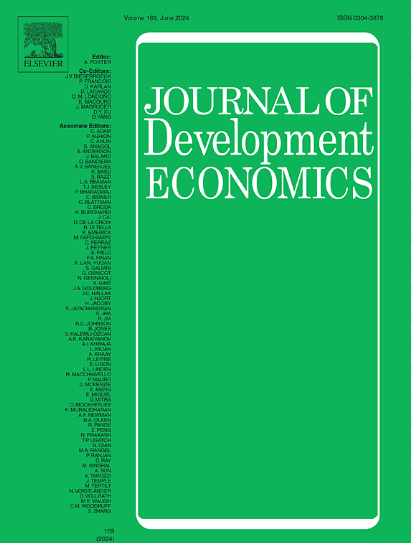新型跨区域输电系统的污染减排效果:来自中国超高压工程的证据
IF 4.6
1区 经济学
Q1 ECONOMICS
引用次数: 0
摘要
由于能源供需的地理不匹配,许多国家面临挑战。传统高压输电系统的容量有限,无法满足日益增长的跨区域输电需求。中国最近开发的特高压(UHV)输电系统提供了一个有希望的解决方案。本研究利用企业层面的排放和能源消耗数据,量化了特高压输电的污染减排效果。采用考虑区域异质性的交错差中差(DID)设计,我们发现特高压线路的运营平均降低了企业二氧化硫总排放量16.8%,排放强度降低了17.1%。机理分析表明,特高压系统提供低成本、稳定的电力,有利于输变电地区的电气化。它还促进了电力输出地区的水力发电,取代了电力输入地区的火电。福利分析表明,纳入环境效益将特高压项目的投资回收期从28年减少到5年,折扣率为2.5%。这些发现有助于对跨区域电力基础设施进行全面评估,特别是在电网现代化是关键能源政策目标的发展中经济体。本文章由计算机程序翻译,如有差异,请以英文原文为准。
Pollution reduction effects of new transregional power transmission systems: Evidence from ultra-high-voltage projects of China
Many countries face challenges due to the geographical mismatch of energy supply and demand. Traditional high-voltage transmission systems have limited capacity to meet the rising need for transregional electricity transfer. China's recently developed ultra-high-voltage (UHV) transmission system presents a promising solution. This study quantifies the pollution reduction effects of UHV transmission using firm-level data on emissions and energy consumption. Employing a staggered difference-in-differences (DID) design that accounts for regional heterogeneity, we find that the operation of UHV lines reduces firms' total SO2 emissions by 16.8 % on average and emission intensity by 17.1 %. Mechanism analysis indicates that the UHV system provides low-cost and stable electricity, facilitating electrification in power importing areas. It also boosts hydropower generation in power exporting areas, displacing thermal power in power importing areas. Welfare analysis shows that incorporating environmental benefits reduces the investment payback period of UHV projects from 28 years to 5 years at a 2.5 % discount rate. These findings contribute to a comprehensive evaluation of transregional electricity infrastructure, particularly in developing economies where grid modernization is a key energy policy goal.
求助全文
通过发布文献求助,成功后即可免费获取论文全文。
去求助
来源期刊

Journal of Development Economics
ECONOMICS-
CiteScore
8.30
自引率
4.00%
发文量
126
审稿时长
72 days
期刊介绍:
The Journal of Development Economics publishes papers relating to all aspects of economic development - from immediate policy concerns to structural problems of underdevelopment. The emphasis is on quantitative or analytical work, which is relevant as well as intellectually stimulating.
 求助内容:
求助内容: 应助结果提醒方式:
应助结果提醒方式:


